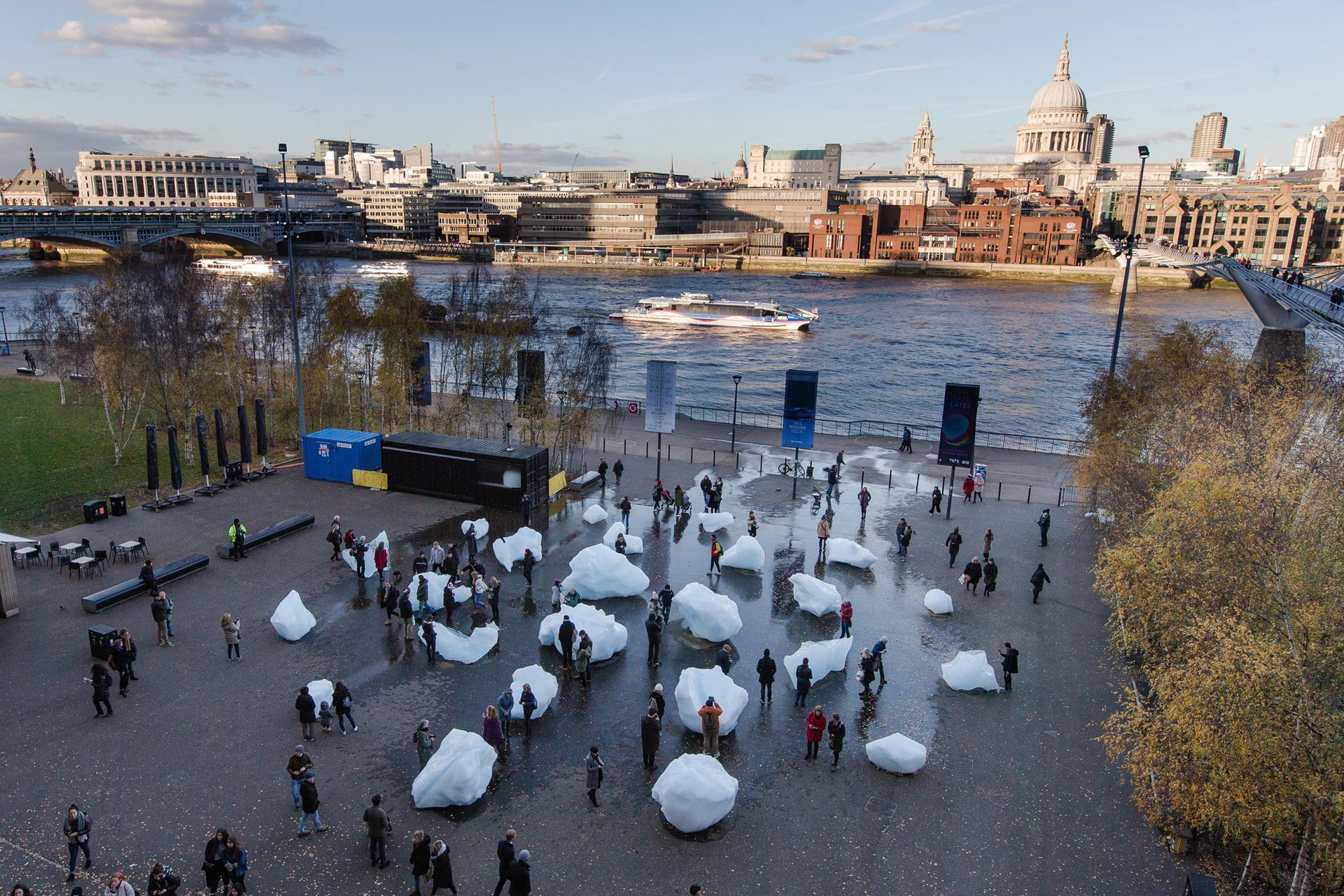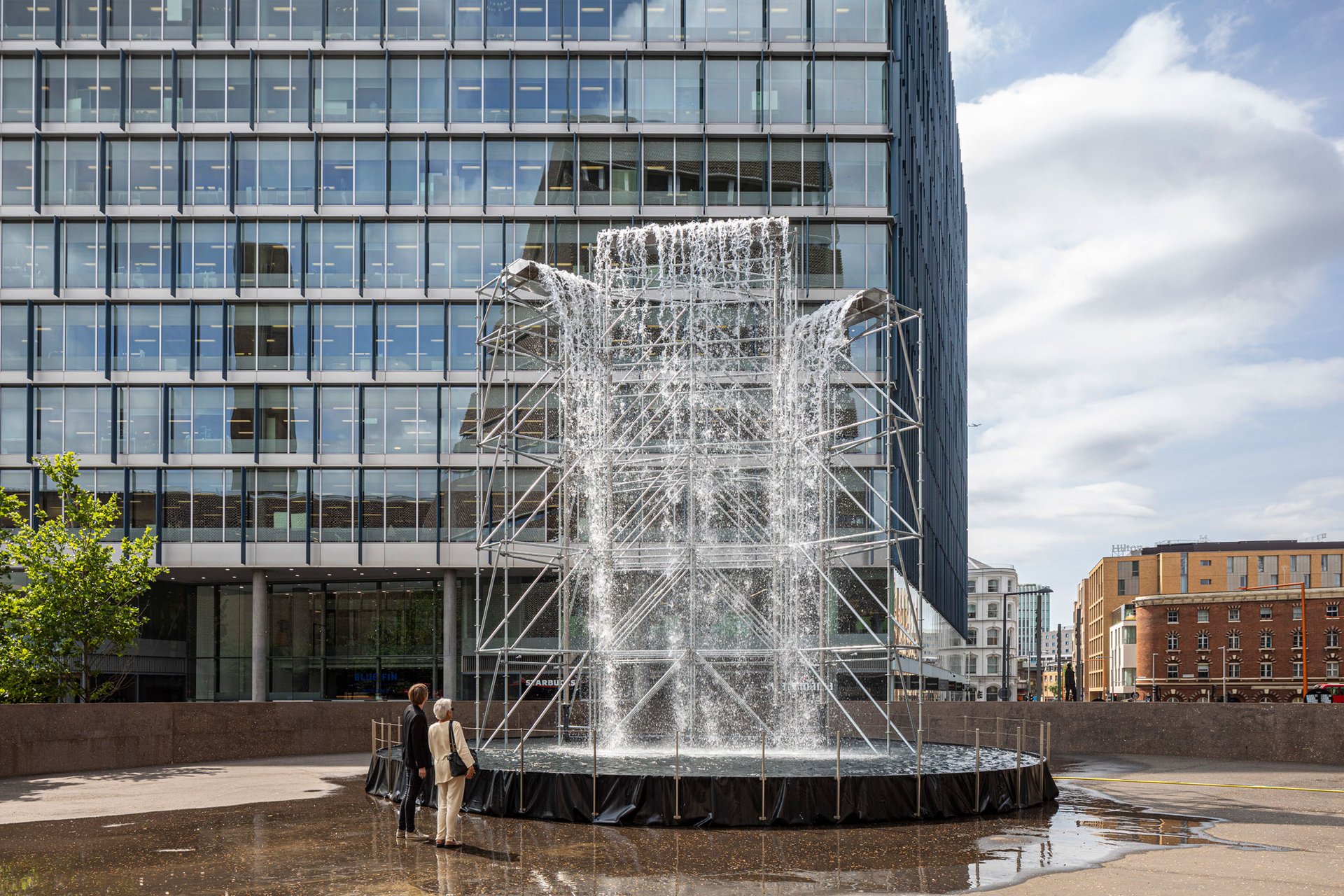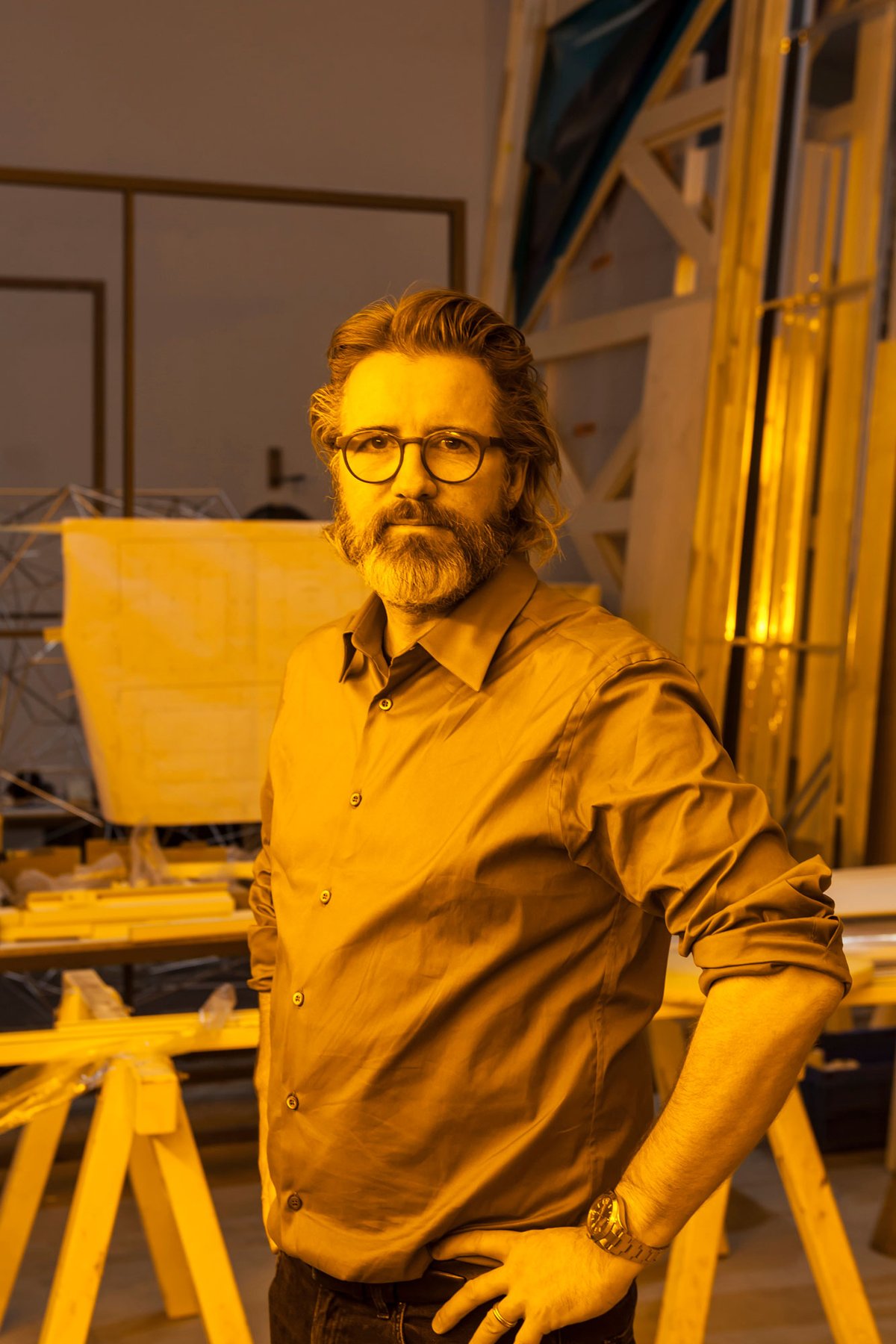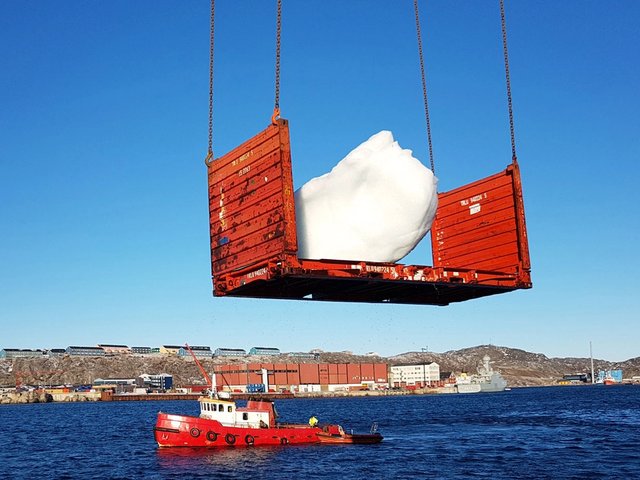A major exhibition of more than 40 works by Olafur Eliasson opening this week at Tate Modern reflects the Danish-Icelandic artist’s ongoing quest to raise awareness of the climate emergency (Olafur Eliasson: In Real Life, 11 July-5 January 2020).
A new sculpture formed by casting a block of glacial ice in bronze, The presence of absence pavilion (2019), references Eliasson’s project Ice Watch, which brought ice blocks from Greenland to Tate Modern last year. “One of the ice blocks was sent to [the studio in] Berlin. We took a negative cast so that the void is in the black box, which I call the presence of absence,” the artist says. “You can see the space where the ice block was; you can stand inside and become the world.”

Eliasson's Ice Watch project brought 24 blocks of glacial ice from Greenland to Tate Modern last year Photo: Charlie Forgham Bailey; © 2018 Olafur Eliasson and Minik Rosing
Artists such as Eliasson have long drawn attention to climate change through their work, yet the hefty carbon footprint of the international art world has gone largely unchecked. “The cultural sector is trying to find its feet and come up with strategies to navigate this,” Eliasson says. “We need to differentiate between the art world and the art market in terms of sustainability. With the market, you should ask Frieze art fair and not Tate Modern how they want to tackle this question.”
Eliasson highlighted a climate change debate he participated in last night at Tate Modern with representatives from the activist group Extinction Rebellion. The talk brought together the designer and activist Clare Farrell, the sustainability adviser Malini Mehra, the environmental campaigner and former Irish president, Mary Robinson, and the filmmaker Bidisha. “Cultural platforms can do things,” the artist says.
The exhibition’s co-curator Mark Godfrey says the Tate chose works belonging mainly to European collections to reduce the project’s own carbon footprint. For instance, among several kaleidoscopic sculptures made by Eliasson, the curators have borrowed Your Spiral View (2002) from the Boros Collection in Berlin. “We think all of the works came to Tate by truck and ferry, and not as air freight,” Godfrey says. “There may be components in things such as a valve for one of the pumps in the [new outdoor installation] Waterfall that came by air freight.”

Olafur Eliasson's new installation outside Tate Modern, Waterfall (2019) Photo: Anders Sune Berg; © Olafur Eliasson
“We are not making those promises for any other show. If we do a retrospective of a US artist, we wouldn’t restrict ourselves to works in Europe… I don’t think anyone would go through Olafur’s show and feel short-changed by the work that’s there,” Godfrey adds.
Eliasson’s engagement with environmental issues is explored in a section of the show called The Expanded Studio, which gives details of his collaboration with the UK charity Julie’s Bicycle, which tracked the carbon footprint of the Ice Watch project (55 tonnes) and the Waterfall (2019) sculpture displayed outside on the terrace.
Eliasson’s studio has also collaborated on a special menu based on organic, vegetarian and locally sourced produce, which will be available at Tate Modern’s Terrace Bar throughout the show. “An average UK meal has 1,583 grams of CO2. The meal we are serving is down 52% [on carbon output],” the artist says.



